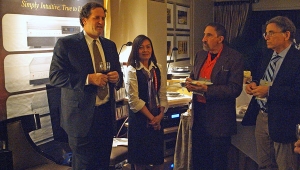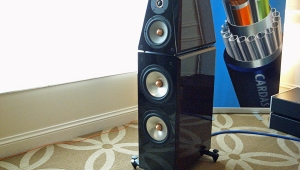| Columns Retired Columns & Blogs |
Stephen, I agree about wanting to spend a limited number of $'s on audio products and I usually reward companies that present products that are overachievers relative to price. I'm astounded how many companies are competing in the high price high end space. Coming from a formal marketing and economics education, I wonder how many of these companies really devote the effort to doing things like price elasticity studies or positioning studies with a view to developing products that present a unique value proposition from an attribute and price perspective and how many of them would sell alot more products and make more money if they were more affordable. I certainly see this as a big issue in the pricing of Hi-rez downloads for example.
Concerning Sam Tellig raving about the Marimba's, I have a distinctly different interpretation of his article. In fact, I remember him being very uncharitable towards this product (maybe his tongue was firmly in his cheek) and Roy Hall sending a justifiably incensed response to your mag. concerning this.
Frank









































